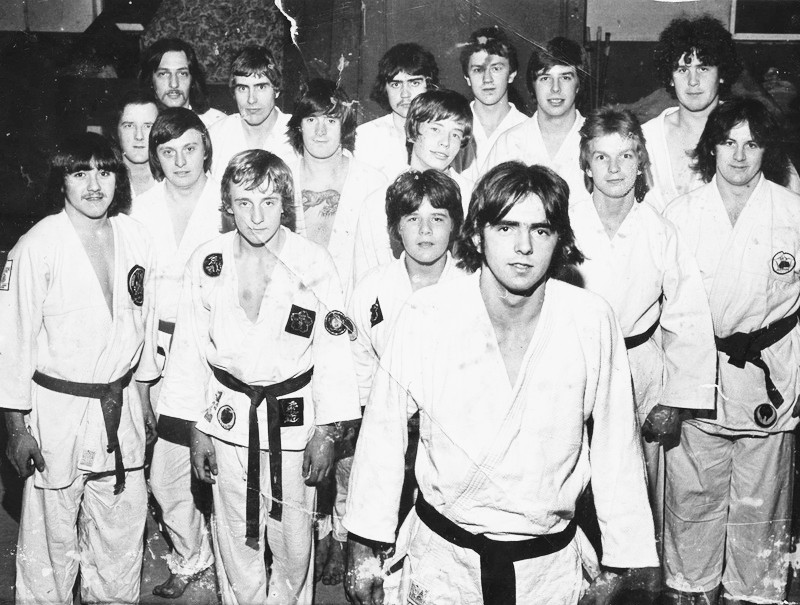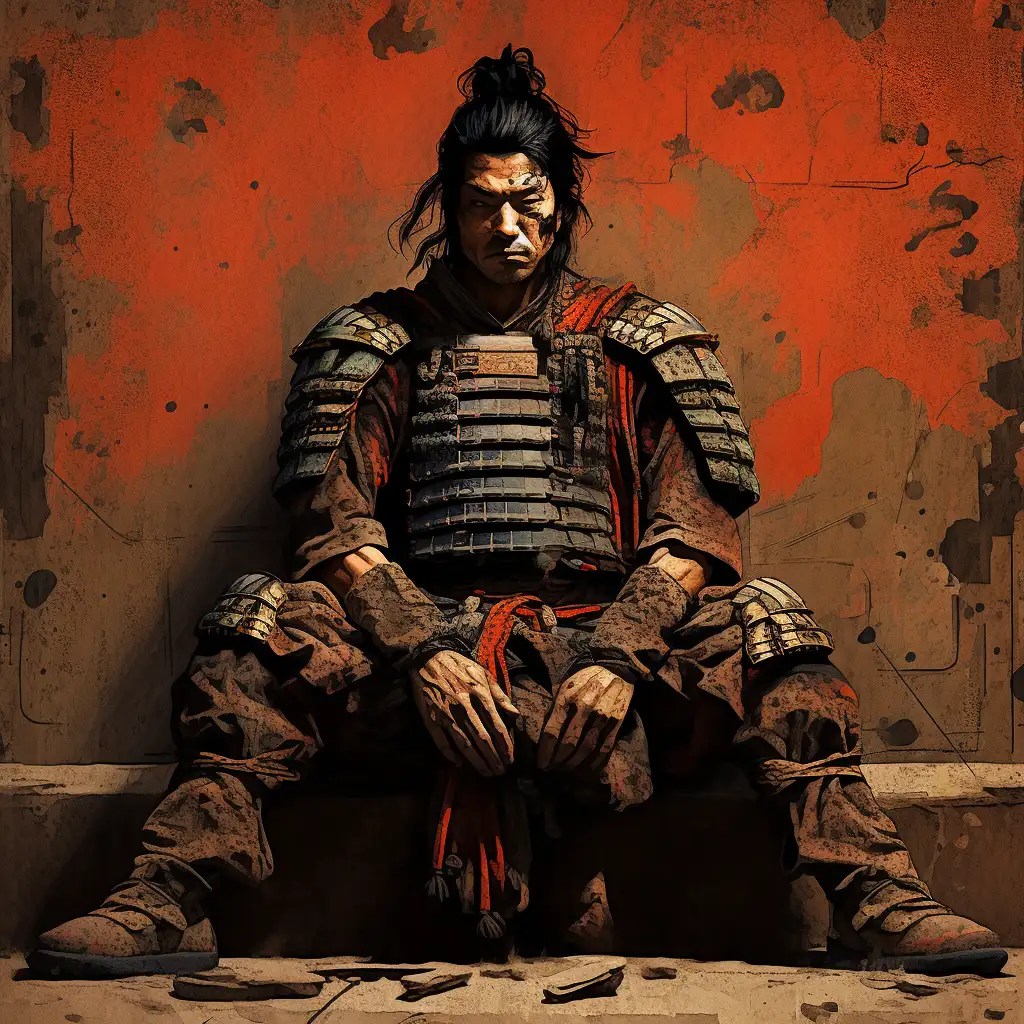A Brief History of the Bushi Kempo Ju-Jitsu Association
It all began as the North Staffordshire Ju jitsu Academy which was originally formed in 1972 by David Hand, 1st dan with the BUDO G.B. and in 1977 the World Jujitsu Association.

However, the academy’s syllabus began to diversify from the strict ju-jitsu techniques of Jimmy Blundell and Robert Clark, the key members of the W.J.J.A. The Hand brothers; Dave and Chris, offered a new, innovative form of martial art as yet unseen in the UK; Chi Ryoku Kempo Ju Jitsu.
The growth of the academy beyond the confines of the Staffordshire border resulted in a change of name to that of the Bushi Kempo Ju Jitsu Academy. The academy joined the Amateur Martial Association for its insurances and to ensure it remained an independent force within martial arts and retain its right to teach its own unique syllabus.
In 1981, as more and more students achieved black belt status they themselves opened up their own clubs to teach and the Academy’s membership swelled to nearly a thousand students. At this point, the academy became an “Association” responsible for sourcing its own insurances and licensing its own membership independently of any other martial arts body.
David Hand, 7th dan, retired in 1995. The Association is now under the administration of Carl Jones, 8th dan.
The name of the Bushi Kempo Ju-Jitsu Association has become synonymous with quality instruction, student care and the freedom to train.
Style History of Kempo Ju-Jitsu
From the crude wrestling of armoured warriors came a refined and scientific way of throwing, holding and subduing. The opponents’ weight strength, speed and momentum are used against him and his intent weakened by blows to vulnerable areas. Some schools of kempo began teaching non-warriors and a form of competition developed.
The kempo practitioners wear a black tunic similar to that of aikido, there is a ladder of progression against which the kempo students can measure their standard, and a coloured belt identifies each rung of the ladder. As the student progresses, so the syllabus expands and becomes more technically demanding.
The kempo student is taught break-falls, throws, joint locks and submission holds. More advanced students learn vital points which when struck can cause unconsciousness. There is little formal competition in kempo these days, but it does exist.
Yoroi Kumi Uchi
Grappling methods used for combat are as old as man on the Asian continent, and this is no less true than in Japan. When the warrior class dominated Japan, such grappling skills became the foundation of close quarter fighting. Methods of grappling dominated the close quarter combat systems of the warriors, simply because those of a purely kick and strike nature proved ineffective against weapons and armour.
Yoroi kumi uchi or grappling in amour is a practical system of combat that became necessary when warriors engaged in single combat abandoned for whatever reason their major weapons. However, yoroi kumi uchi is not necessarily, unarmed combat. This form requires the combatants to use their hips and limbs in a particular powerful fashion. This is made possible through yotsu gumi, a four handed symmetrical method of grappling by which the combatants lock on to each other without actually grasping the armour. An example of such is suki mine waza zuki and one-handed throws.
Mastering the yotsu gumi was essential to effective grappling in armour. This method of locking up your opponent developed balance, advantage and mobility with which to preserve his position and to hurl his adversary to the ground at any appropriate moment. Either warrior could draw his short blade (yoroi-doshi) that was worn at the hip and slash at his opponent’s hips. Great skill was required to maintain balance and control whilst unsheathing and attempting to plunge it into a vital organ of his body.
A large number of classical combative traditions gave considerable attention to the study of yoroi kumi uchi. Based on historical evidence the Tsutsumi-Hozan Ryu a fifteenth century martial tradition appears to have been the first to do so.
From Kempo to Ju-Jitsu
Purely empty hand systems are largely the product of the Meiji and later eras.
- Heian period 794 to 1185
- Kamakura period 1185 to 1336
- Ashikaga period 1336 to 1603
- Edo period 1603 to 1868
In order that this important fact may be seen, and the true nature of empty hand methods understood, some background as to the relationship between empty hand combat and classical weapons systems is necessary.
The classical warrior had little use for any system of combat that did not use weapons. This was because the opportunity for unarmed combat was rare, not being favoured either by custom or by circumstance. The very rationale and mystique that surrounded the classical warrior revolved around his possession of weapons, and the necessities of the time in which he functioned required him to be well armed and trained in the use of such deadly weaponry.
For the warrior to entertain the thought of success in combat, he could only attack his foe when armed.

The fact that armour was worn influenced the manner in which a warrior would deal with his foe. Mere sparring tactics of a boxing nature, which must rely on the natural parts of the body — hand, fist and foot in delivering atemi blows directed at anatomical weak points. Striking, punching or kicking, proving futile against a heavily armoured warriors and were more likely to injure the attacker than the intended victim.
It was quite natural that close quarter combat should be characterised by grappling methods. The general word describing these methods of combat was Kumi Uchi an expression that suggests the clashing of two combatants at close quarters. However, these methods of grappling included liberal use of atemi strikes as could be delivered.
Teachings contained in the Tenshin Shoden Katori Shinto Ryu, a fifteenth century martial tradition from the Kamakaga period, mention a systematic kind of grappling, carried out between persons who may or may not be armed in the style of Katori Shinto Ryu.
The Tachneouchi Ryu, founded in the first half of the sixteenth century, featured a mode of grappling with the warrior clad in minimal armour, consisting of leggings and gauntlets. It was also a method of restraining an assailant, using purely empty handed methods of combat.
Araki Mujinsia (1584-1637) as a youth studied swordsmanship under Yagyu Shinkage Ryu masters. As the eleventh headmaster of the Muso Jikiden Ryu, Mujinsia also studied with Kaganosuke and thereafter founded his own style of combat, which he first called Araki Ryu. Later after adding more weapon and open handed techniques, he retitled it BUDO ARAKI KEMPO RYU. The name suggests a synthesis of various arts of combat, including empty handed combat methods.
A clear-cut shift of emphasis from weapons to empty hand tactics is revealed in the development of the Araki Kempo Ryu system.
Kempo Ju-Jitsu
By the late seventeenth century the Budo Araki Kempo Ryu, had adapted itself to the tempo of Tokugawn society. In its dojo the following injunctions were posted.
- Kempo is an art of self-preservation
- Kempo must lead to the preservation of human life, not the taking of it
- Kempo is an art that consists in war and in defeating an enemy
The name “kempo,” which may be roughly translated as “a method of killing people,” possessed many points of resemblance to ju-jitsu, but was totally different in practice — being a system of self-defence against sudden attack with intent to kill, repaying in kind the attackers intent.
Kempo of course was a system of attack and defence that branched off from ju-jitsu, into the path of strenuous endeavour, becoming a more scientific system than ju-jitsu itself. It was, declared an illegal practice when the sanctity of human life was recognised under the new regime.
Another analogous system known as Tori in some parts of Japan and Shime in others, was an extension of kempo in the department of groundwork. It is more than possible that the locks and holds of ju-jitsu were developed by the exponents of the Tori system.



Leave a comment